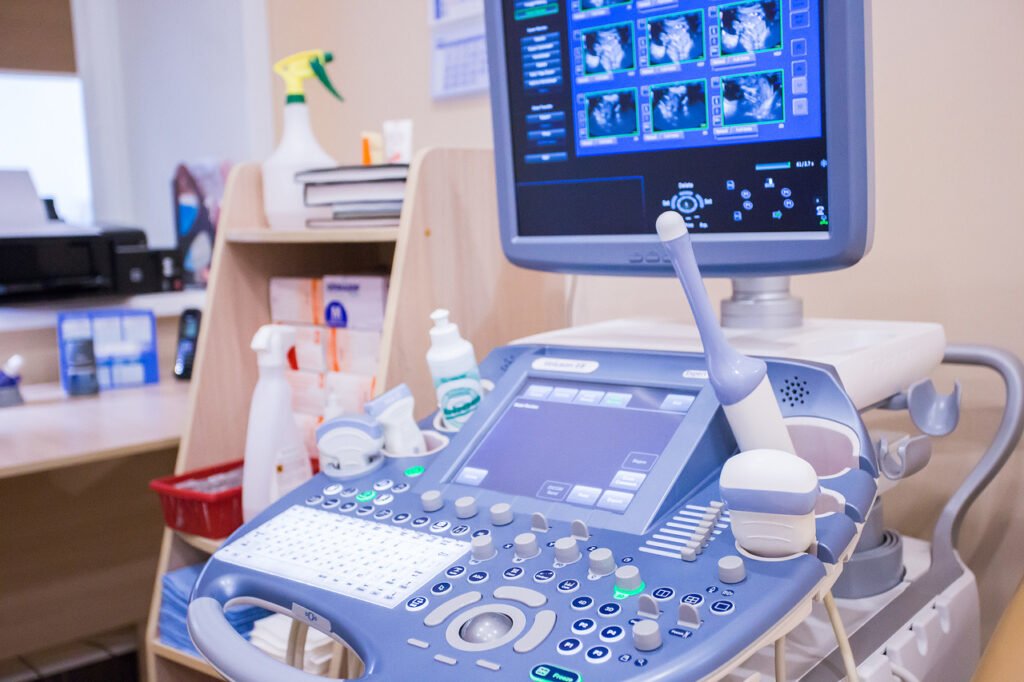Pelvic ultrasound technology offers invaluable insights into the reproductive and urinary systems, providing essential information for diagnosis and treatment. Whether you’re dealing with unexplained pain, monitoring pregnancy, or assessing gynecological conditions, understanding pelvic ultrasound technology can help you navigate your healthcare needs more effectively. In this guide, we will explore the benefits of pelvic ultrasound, its common uses, and what you can expect during the procedure.
What is Pelvic Ultrasound Technology?
Defining Pelvic Ultrasound
Pelvic ultrasound uses high-frequency sound waves to create images of the pelvic organs. It helps visualize structures within the pelvis, including the bladder, uterus, ovaries, and prostate. By emitting sound waves and capturing their reflections, pelvic ultrasound technology provides detailed images without the need for invasive procedures.
How It Works
The procedure involves placing a small transducer on the skin or inserting it into the body to capture images. The transducer sends out sound waves that bounce off internal structures and return to the device. The returning sound waves are converted into visual images displayed on a monitor. This process helps healthcare providers assess the condition of pelvic organs and tissues.
Benefits of Pelvic Ultrasound Technology
1. Non-Invasive and Safe
One of the primary benefits of pelvic ultrasound is its non-invasive nature. The procedure does not require incisions or injections, making it a safe option for evaluating pelvic health. Additionally, ultrasound does not involve ionizing radiation, unlike X-rays or CT scans, which enhances its safety profile.
2. Detailed Imaging
Pelvic ultrasound provides detailed images of pelvic structures, allowing for precise assessment. This imaging capability is crucial for diagnosing a range of conditions, from ovarian cysts to uterine fibroids. The clarity of the images aids in accurate diagnosis and effective treatment planning.
3. Real-Time Visualization
The technology offers real-time imaging, which allows healthcare providers to observe pelvic organs and structures as they appear. This dynamic view helps in assessing the functionality of organs and identifying abnormalities promptly. For example, it can show how the bladder empties or how the uterus contracts during labor.
4. Versatility in Applications
Pelvic ultrasound finds applications across various medical fields. It is used in obstetrics to monitor fetal development, in gynecology to evaluate reproductive health, and in urology to assess urinary tract conditions. This versatility makes pelvic ultrasound a valuable tool in comprehensive healthcare.
Common Uses of Pelvic Ultrasound Technology
1. Obstetric Assessment
In obstetrics, pelvic ultrasound plays a crucial role in monitoring pregnancy. It helps confirm gestational age, assess fetal growth, and evaluate the position of the placenta. Ultrasound imaging also aids in detecting potential complications such as ectopic pregnancies or abnormal fetal development.
2. Gynecological Evaluation
Pelvic ultrasound is frequently used in gynecology to evaluate reproductive health. It can identify conditions such as ovarian cysts, fibroids, and endometriosis. By visualizing the uterus and ovaries, healthcare providers can diagnose issues that might cause pain, irregular bleeding, or infertility.
3. Urological Investigation
In urology, pelvic ultrasound helps assess the urinary system. It can detect abnormalities such as bladder stones, kidney cysts, or prostate enlargement. For instance, it can reveal the presence of bladder tumors or measure prostate size, aiding in the diagnosis and management of urological conditions.
4. Post-Surgical Monitoring
After certain pelvic surgeries, ultrasound is used to monitor the healing process and ensure that the surgical site is healing properly. It helps detect any complications, such as fluid accumulation or abnormal growths, ensuring that the recovery process is progressing as expected.
What to Expect During a Pelvic Ultrasound Procedure
1. Preparation
Typically, preparation for a pelvic ultrasound is straightforward. For a transabdominal ultrasound, you may need to have a full bladder, so you might be asked to drink fluids before the procedure. For a transvaginal ultrasound, which provides more detailed images, you will not need a full bladder. Your healthcare provider will give you specific instructions based on the type of ultrasound being performed.
2. The Procedure
During the procedure, you’ll lie down on an examination table. For a transabdominal ultrasound, the technician will apply a clear gel to your abdomen and move the transducer over the area. For a transvaginal ultrasound, the technician will insert a small, lubricated probe into the vagina. Both types of ultrasound are generally well-tolerated and should not cause significant discomfort.
3. What You’ll Feel
Most patients experience minimal discomfort during a pelvic ultrasound. The gel used for transabdominal ultrasounds might feel cool, and you might experience some pressure from the transducer. For transvaginal ultrasounds, you may feel slight pressure or discomfort from the probe, but it should not be painful. Communicate with the technician if you experience any discomfort.
4. After the Procedure
After the procedure, you can resume your normal activities immediately. There are usually no special aftercare instructions. The images obtained during the ultrasound will be reviewed by a radiologist, and your healthcare provider will discuss the results with you, explaining any findings and recommend the next steps.
Tips for a Smooth Pelvic Ultrasound Experience
1. Follow Instructions Carefully
Adhering to any pre-procedure instructions given by your healthcare provider ensures that the ultrasound is effective. For instance, if instructed to drink fluids before a transabdominal ultrasound, following this advice will help achieve clearer images.
2. Communicate Openly
If you have any concerns or questions about the procedure, communicate openly with your healthcare provider or the ultrasound technician. Understanding what to expect can alleviate anxiety and ensure that you are comfortable throughout the process.
3. Stay Relaxed
Remaining relaxed during the ultrasound can help make the procedure more comfortable. Take deep breaths and try to stay calm, as tension or anxiety can affect the quality of the images.
Conclusion
Pelvic ultrasound technology offers a non-invasive, detailed, and versatile approach to assessing pelvic health. Whether used for obstetric monitoring, gynecological evaluations, urological investigations, or post-surgical assessments, pelvic ultrasound plays a crucial role in modern medicine.
By understanding the benefits and procedures associated with pelvic ultrasound, you can approach the process with confidence. If you have any concerns or need further information, consult with your healthcare provider to ensure you get the most out of this valuable diagnostic tool.
Pelvic ultrasound technology provides essential insights into pelvic health, offering a window into various conditions and their management. Embrace the benefits of this technology and ensure that your health and well-being remain a top priority.


